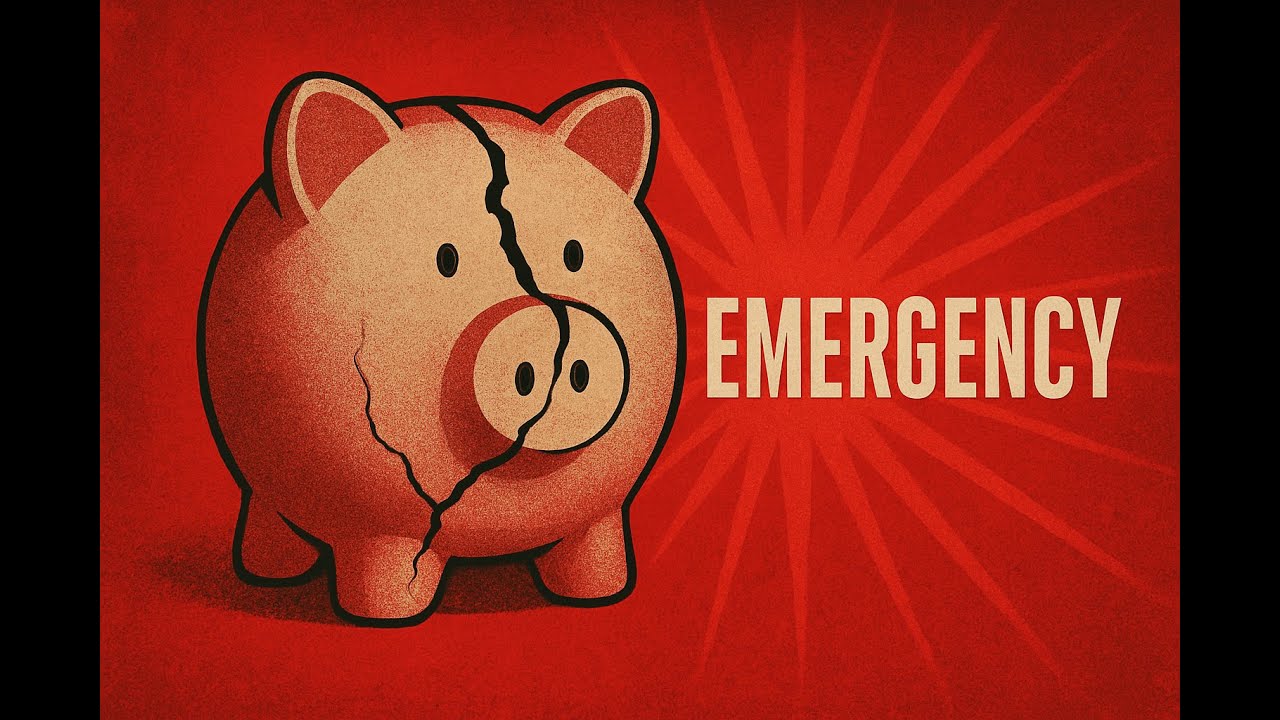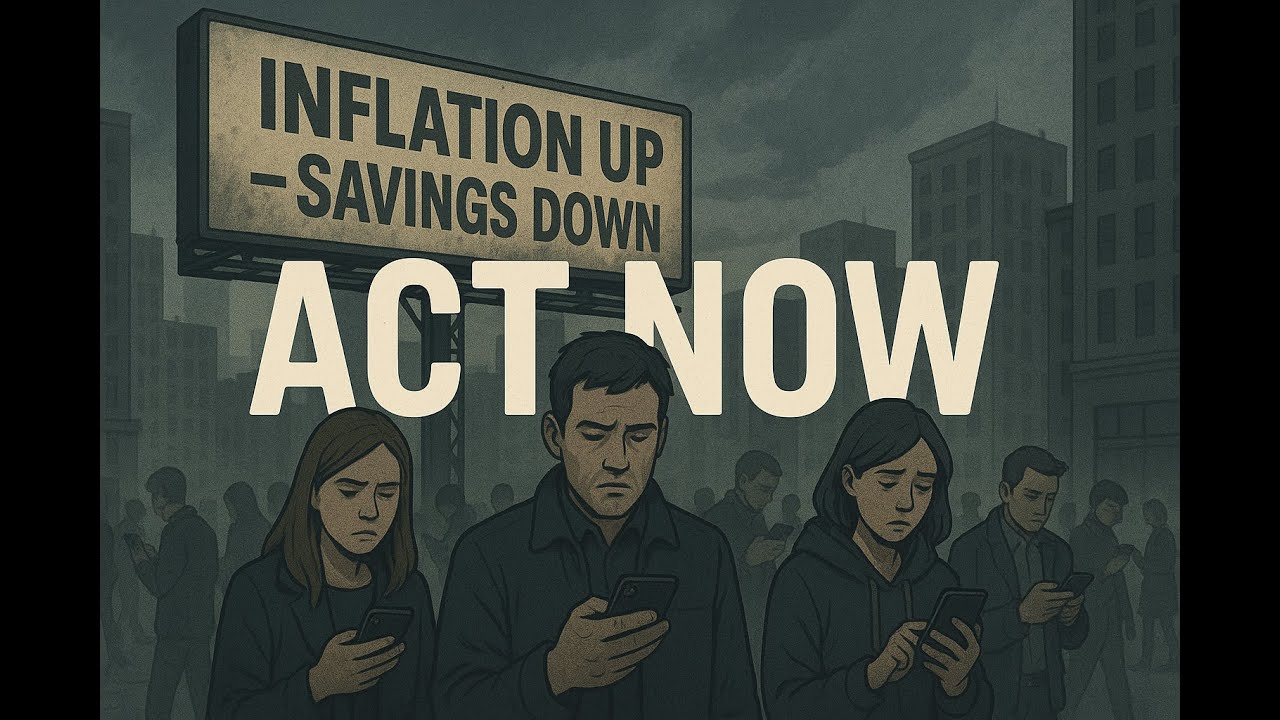Why the Average [savings](/posts/emergency-funds-fail) Rate in the US Is Alarmingly Low and What It Means for Your Financial Future
Explore why the average US [savings](/posts/emergency-funds-fail) rate is only 4%, the factors driving this trend, and actionable steps to boost your [financial security](/posts/emergency-funds-fail) amid rising costs and stagnant wages.
💡 Learn more: Check out our guide on The Debt Trap Most Beginners Fall Into for deeper insights.
Why the Average savings Rate in the US Is Alarmingly Low and What It Means for Your Financial Future
Understanding how much of their income people save is crucial for assessing financial health on both an individual and national level. Recent data reveals that the [average savings rate in the US](https://www.cnbc.com/2023/04/27/us-personal-[savings](/posts/emergency-funds-fail)-rate-falls-near-record-low-as-consumers-spend.html) hovers around a surprisingly low four percent of income. This figure highlights a worrying trend: the majority of Americans are spending most of what they earn, leaving little cushion for emergencies or retirement. This article explores the factors behind this declining savings rate, its implications, and practical steps individuals can take to improve their financial security.
Table of Contents
-
[📉 The Current State of savings: What Does Four Percent Really Mean?](#📉-the-current-state-of-savings:-what-does-four-percent-really-mean?)
-
💳 Debt Dependency and Consumer Behavior: Why Saving Feels Out of Reach
-
[💼 Wage Stagnation: The Silent Drain on savings Potential](#💼-wage-stagnation:-the-silent-drain-on-savings-potential)
-
[🔍 The Broader Impact: Why Low savings Rates Matter](#🔍-the-broader-impact:-why-low-savings-rates-matter)
-
[💡 Strategies to Improve savings Rates and Financial Health](#💡-strategies-to-improve-savings-rates-and-financial-health)
📉 The Current State of savings: What Does Four Percent Really Mean?
The personal savings rate measures the percentage of income that individuals set aside rather than spend. According to the US Bureau of Economic Analysis, the average American saves just about four percent of their income. For example, someone earning $50,000 after taxes who manages to save $2,000 annually has a savings rate of four percent. This includes all forms of savings—whether in savings accounts, retirement funds, or other financial vehicles.
While saving any amount is positive, four percent is well below the recommended savings rate suggested by financial experts. Most advisors recommend setting aside between 10 to 15 percent of income specifically for retirement. This gap indicates that many people are not saving enough to ensure financial security in later life.
🏠 Rising Living Costs: The Hidden Barrier to Saving
One of the main reasons for the low savings rate is the steep rise in living expenses over the past decade, often outpacing wage growth. Key cost drivers include:
-
Housing: Rent for a typical two-bedroom apartment averages around $2,000 per month, excluding utilities. Mortgage rates have surged from around 3 percent to between 6.5 and 7.5 percent, significantly increasing monthly payments. For example, a $400,000 home that previously had a $1,500 monthly payment now costs approximately $2,400—a $900 increase.
-
Childcare: Full-time daycare can cost between $1,000 and $1,500 per month per child. For families with two children, this can add up to $30,000 annually, roughly equivalent to a second mortgage.
-
Healthcare: Even with employer-sponsored insurance, families often pay $6,000 to $8,000 annually in premiums, plus out-of-pocket costs like copays and prescriptions.
-
Education: Many young adults are burdened with student loans, paying $300 to $500 or more each month, further limiting their capacity to save.
These rising costs consume a large portion of income, leaving less room for saving.
💳 Debt Dependency and Consumer Behavior: Why Saving Feels Out of Reach
Beyond living costs, changing consumer habits and heavy reliance on debt also contribute to low savings rates. Debt has become an embedded part of adult life, often introduced early through student loans, credit cards, and car financing. The average new car payment is about $742 per month, and many households have two vehicles, doubling this expense.
Debt payments for depreciating assets, combined with mortgages and credit card bills, consume a significant share of monthly income. This leaves little leftover for savings, even for those who wish to save more. The normalization of a debt-heavy lifestyle makes consistent saving seem unattainable.
Additionally, consumer culture encourages frequent spending on non-essential items. Impulse purchases of $100 or more on clothing, home decor, or dining out multiple times per week can quickly erode disposable income. Often, people justify these expenses by their income level, but the cumulative effect undermines savings goals.
The pressure to maintain a certain lifestyle also fuels overspending. The desire to keep up with peers by upgrading cars, homes, or gadgets leads many to prioritize immediate gratification over long-term financial stability.
💼 Wage Stagnation: The Silent Drain on savings Potential
While expenses rise, wages have largely remained stagnant for many workers. Employees often receive modest raises averaging around 3 percent annually, which barely keep pace with inflation. This effectively means their purchasing power doesn’t increase, making it harder to save.
💡 Learn more: Check out our guide on [How Inflation Is Stealing Your savings](/posts/how-inflation-is-stealing-your-savings-and-how-to-stop-it) for deeper insights.
Many workers stay in the same job for years without actively seeking better-paying opportunities. Reasons include loyalty, burnout, or time constraints, but the financial consequence is clear: stagnant wages limit the ability to build savings.
Financial experts suggest that workers should advocate for pay raises aligned with their experience and value or explore new roles and companies offering better compensation. Entrepreneurship or side businesses can also be viable ways to increase income streams and boost saving capacity.
🔍 The Broader Impact: Why Low savings Rates Matter
Low savings rates have consequences beyond individual households. Without adequate savings, people are vulnerable to financial shocks like medical emergencies, car repairs, or job loss. This can lead to evictions, repossessions, and foreclosures, which ripple through the economy and increase instability.
For retirement, the implications are even more severe. Saving only four percent annually makes it difficult to accumulate enough funds to retire comfortably, increasing reliance on social programs or forcing people to work longer.
💡 Strategies to Improve savings Rates and Financial Health
Raising the savings rate requires addressing both personal habits and systemic challenges. Key strategies include:
-
Contentment and Mindful Spending: Focusing on appreciating what one already owns rather than chasing the latest trends or upgrades can reduce unnecessary expenses.
-
Budgeting and Tracking: Keeping a clear record of income and expenses helps identify overspending areas and frees up money for saving.
-
Proactive Income Management: Seeking better-paying jobs, negotiating raises, or exploring side businesses can increase the amount available to save.
-
Setting Clear savings Goals: Establishing targets for emergency funds, retirement, and other priorities provides direction and motivation.
-
Educating on Financial Planning: Understanding how much to save for emergencies and retirement reduces uncertainty and helps create realistic plans.
📌 Key Takeaways
-
The average US savings rate is only about 4 percent, significantly below the recommended 10-15 percent for retirement.
-
Rising living costs—housing, childcare, healthcare, and education—consume much of people’s income, limiting savings.
-
Debt reliance and consumer culture encourage spending beyond means, making saving difficult.
-
Wage stagnation and minimal raises often fail to keep up with inflation, reducing saving potential.
-
Low savings rates increase vulnerability to financial emergencies and threaten retirement security.
-
Improving savings requires both personal financial discipline and systemic change to address economic pressures.
❓ Frequently Asked Questions
What is a healthy savings rate?
Financial experts generally recommend saving 10-15% of your income for retirement alone. Additional savings for emergencies and other goals should be factored in as well.
Why do many Americans save so little?
High costs of living, heavy debt burdens, consumer spending habits, and stagnant wages all contribute to low saving rates.
How can I start saving if I’m living paycheck to paycheck?
Begin by creating a budget, cutting non-essential expenses, and setting small, achievable savings goals. Increasing income through side jobs or negotiating raises can also help.
Does saving only 4% of income put me at risk?
Yes, saving too little makes it difficult to cover emergencies and build retirement funds, increasing financial vulnerability.
What role do employers play in helping employees save?
Employers can offer competitive wages, benefits like retirement plans with matching contributions, and financial wellness programs to support saving habits.
🔚 Final Thoughts
The current average savings rate in the US paints a sobering picture of financial vulnerability for many households. While personal responsibility is an important factor, broader economic challenges like rising living costs and wage stagnation also play significant roles. Increasing savings rates will require a combination of individual action—such as mindful spending, proactive income management, and clear financial planning—and systemic efforts to make living more affordable. By addressing these issues, individuals and society can build stronger financial resilience for the future.
🚀 Ready to Build Real Wealth?
You've learned the strategy – now it's time for action!
🎬 Get Weekly Financial Education
Join thousands learning smart money strategies that actually work.
📺 Subscribe to @StartWithCents
💎 Download Your Free Wealth-Building Tools
Get the exclusive "First Dollar Game Plan" – your step-by-step guide to financial freedom.
📚 Continue Your Financial Journey
Explore more money-smart articles and strategies.
📖 Read More Posts • 🏠 Homepage
💡 Remember: Knowledge without action is just entertainment. Take one step today!

